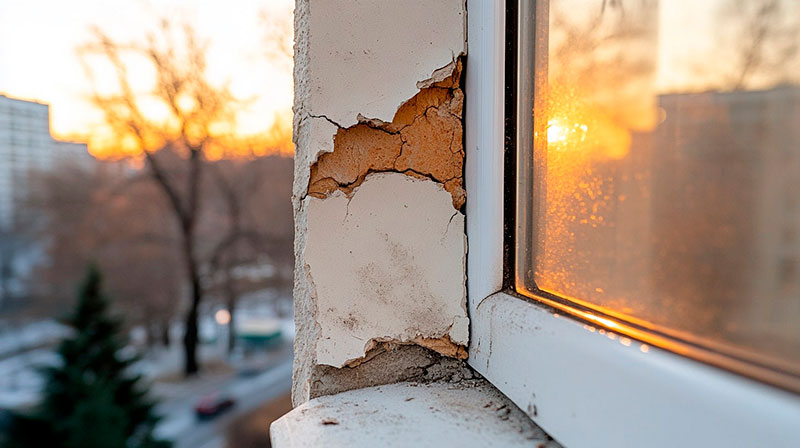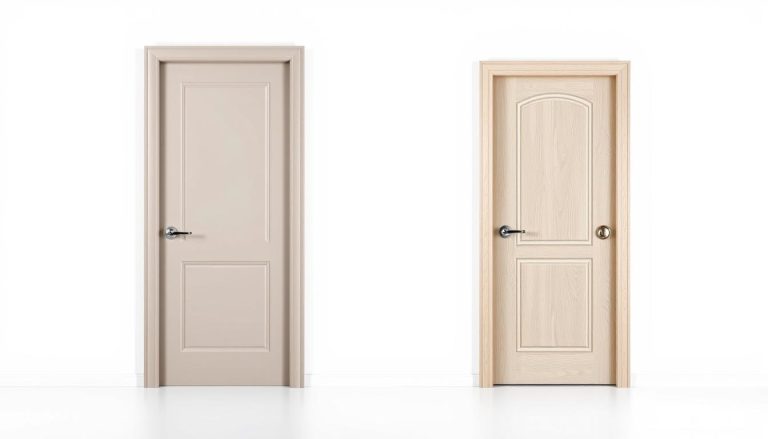Keeping your home warm during the frigid Canadian winters doesn’t have to mean skyrocketing energy bills. Properly insulating your windows is one of the most cost-effective and efficient ways to maintain heat and reduce energy costs. In this comprehensive guide, we’ll explore practical tips for insulating your windows, addressing common methods and materials, and targeting every homeowner’s needs.
Window Replacement Near Me
Preparing Your Windows for Insulation
Preparing your windows is the first step towards effective insulation. By doing so, you ensure a solid foundation for any insulation method you choose.
-
Inspect the Condition of Window Frames
Examine your window frames for cracks, gaps, or signs of wear. Damaged frames can allow cold air to seep in, reducing the effectiveness of insulation. -
Clean Thoroughly
Dirt and debris can prevent insulation materials from adhering properly. Use a mild cleaner to wipe down window frames and surrounding areas. Clean surfaces ensure a better seal. -
Seal Existing Gaps
Identify and seal any gaps using rope caulk or a high-quality window and door sealant. Rope caulk is easy to apply and ideal for temporary insulation. -
Test for Leaks
A simple way to test for drafts is by holding a lit candle near the window edges. If the flame flickers, there’s likely a leak. Addressing these spots before applying insulation can dramatically improve performance. -
Ensure Sash Locks are Functional
Properly functioning sash locks on double-hung windows help secure the seal between the upper and lower sashes. This simple step can minimise drafts significantly. -
Gather Insulation Materials
Having the right tools on hand, such as shrink film, plastic sheeting, or weatherstripping, will save time. These materials are easy to apply and remove, making them perfect for the colder months.
A small crack in your window frame can make a big difference in heat loss. It’s always better to repair before insulating.
By taking the time to prepare, you’re ensuring your efforts to insulate windows will have the greatest impact.
Find related services
Sealing Gaps and Cracks

Sealing gaps and cracks is the backbone of proper window insulation. Even the smallest gaps can let in cold air, making your heating system work overtime. Here are the most effective ways to seal those problem areas:
-
Rope Caulk
Rope caulk is a cost-effective and easy-to-use option for filling small gaps around window frames. Simply press it into cracks and crevices. It’s also removable, making it an excellent choice for renters. -
V-Seal Weatherstripping
V-seal weatherstripping is ideal for sealing the gaps between the sash and frame of double-hung windows. Its adhesive backing makes installation straightforward, and it’s flexible enough to allow window operation. -
Window and Door Sealant
Silicone-based sealants are perfect for sealing joints and cracks in window frames. These provide a durable, weather-resistant barrier. -
Plastic Sheeting or Film
Plastic film creates an airtight seal over the window. Applied with double-sided tape and tightened using a hair dryer, it’s a simple yet highly effective way to reduce drafts.
Pro Tip: Daniel Klein, Project Manager, advises
When using rope caulk, ensure the surface is clean and dry. This will help it adhere better and last through the colder months.
Comparison of Materials for Sealing Gaps and Cracks
| Material | Best Use | Advantages | Drawbacks |
| Rope Caulk | Small gaps around window frames | Easy to apply and remove; affordable | Not suitable for large gaps; temporary |
| V-Seal Weatherstripping | Double-hung windows and sashes | Flexible; allows window operation | May need replacement after one season |
| Silicone-Based Sealant | Joints and cracks in window frames | Durable; weather-resistant | Requires precise application; permanent |
| Plastic Sheeting/Film | Entire window covering | Creates airtight seal; cost-effective | Reduces visibility; not reusable |
Find related products
Window Insulation Methods
Various methods can enhance your window insulation and minimise heat loss. Each has unique benefits, making it easy to select the best option for your home.
Comparison of Window Insulation Methods
| Method | Best Use | Advantages | Drawbacks |
| Shrink Insulation Film | Single-pane windows | Affordable; creates storm window effect | Requires careful application; temporary |
| Polyurethane Foam | Gaps around window frames | Airtight seal; long-lasting | Can expand excessively if overapplied |
| Weatherstripping | Moveable parts like sashes | Versatile; easy to install | Needs replacement over time |
| Bubble Wrap Insulation | Glass surfaces | Cost-effective; easy to apply | Reduces visibility; less durable |
-
Shrink Insulation Film
This film creates a storm window effect by covering the interior of the window and shrinking to fit when heated with a hair dryer. It’s ideal for single-pane windows, reducing heat loss without obstructing light. -
Polyurethane Foam Insulation
For larger gaps around window frames, polyurethane foam provides an airtight seal. It’s a permanent solution but requires careful application to avoid overexpansion. -
Weatherstripping
Weatherstripping is a versatile option for blocking drafts in movable parts of windows, such as sashes. It’s easy to apply and remove, making it suitable for seasonal use. -
Bubble Wrap Insulation
An inexpensive DIY solution, bubble wrap can be pressed onto glass with water to create an insulating layer. While it’s effective at reducing heat loss, it may not be visually appealing for all spaces.
By combining these methods, you can achieve optimal insulation and reduce energy costs.
Installing Window Treatments
Window treatments not only enhance your home’s aesthetic but also play a crucial role in improving insulation. They are especially beneficial during the colder months and can be adjusted or removed for summer convenience.
Comparison of Window Treatments
| Treatment | Best Use | Advantages | Drawbacks |
| Thermal Curtains | Large windows or sliding doors | Multi-layer insulation; easy to remove | Can block some natural light |
| Honeycomb Shades | Windows facing exterior walls | Traps air in cellular structure; stylish | May have a higher upfront cost |
| Reflective Window Film | Windows with high sunlight exposure | Reflects heat; easy to install | Reduces visibility slightly |
| Blinds and Shades | Bedrooms or living spaces | Affordable; good for light control | Less effective for extreme temperatures |
| Wooden Shutters | Traditional or rustic settings | Durable; provides strong insulation | High initial cost; bulky |
-
Thermal Curtains or Insulated Drapes
These curtains are designed with multiple layers to minimise heat loss and reflect cold air back outside. Letting light into your house while keeping the room warm is a key advantage of this option. They can easily be removed or pulled back when not needed. -
Honeycomb or Quilted Shades
Honeycomb shades are known for their cellular structure that traps air, providing an extra layer of insulation. -
Reflective Window Insulation
Reflective window film is another effective way to maintain warmth. It reflects interior heat back into the room while blocking cold air from seeping in. This is commonly used in units where exterior insulation may not be feasible. -
Blinds and Shades for Insulation
While not as effective as thermal curtains, blinds and roll-down shades can minimise heat loss. They can be used in conjunction with other treatments for improved results. -
Wooden Shutters
Wood shutters add a rustic charm to any home and are effective at blocking cold air. They’re particularly useful for openings that require a sturdy, long-term solution.
Pro Tip: Eugene Siukayev, Project Manager, says
Honeycomb shades are ideal for windows that face exterior walls in colder locations, as they create a thermal barrier that fits inside the frame perfectly.
Maintaining Your Insulated Windows
Regular maintenance is key to ensuring your insulated windows perform efficiently year after year. A bit of attention to detail can make all the difference in retaining warmth and reducing energy bills.
-
Inspect Regularly
Look for wear, cracks, or other damage to insulation materials. Small issues, such as a loose seal, can lead to significant heat loss over time. -
Reapply Sealants or Materials
Rope caulk, weatherstripping, and plastic films may need periodic reapplication. This is particularly true for materials exposed to high moisture levels. -
Clean Thoroughly
Clean your windows and surrounding areas to maintain an airtight seal. Debris or dirt can interfere with insulation and reduce its effectiveness. Regular cleaning also prevents condensation from accumulating on one side of the window. -
Store Seasonal Materials Properly
Insulation materials like shrink film or plastic sheeting can be removed during the summer. Store them in a dry location for reuse next winter. Proper storage minimises waste and saves you the hassle of buying new materials each season. -
Monitor and Adjust as Needed
Insulated windows may require small adjustments over time, such as tightening shrink film with a hair dryer or replacing worn-out strips of weatherstripping. Monitoring these elements ensures your house remains energy-efficient.
Note: Vitaly Shapiro, Vice President of Sales, explains
Homeowners in humid locations should check their windows more frequently to prevent moisture build-up, which can compromise insulation.
Maintenance Checklist
| Task | Frequency | Notes |
| Inspect for cracks or wear | Monthly during winter | Focus on high-moisture areas |
| Clean windows and frames | Bi-monthly | Use non-abrasive cleaning solutions |
| Reapply insulation materials | As needed | Particularly after severe weather |
By staying proactive, you can extend the lifespan of your window insulation efforts, keeping your home comfortable throughout the colder months. For more guidance, explore our tips on how to save on energy bills.
Final Check and Maintenance
A thorough inspection ensures maximum effectiveness:
- Perform a Final Check: Look for any missed gaps or cracks. Use a draft detector to confirm airtight insulation.
- Schedule Maintenance: Plan periodic maintenance to keep your windows in top condition.
- Consider Professional Help: If you’re unsure about the process or need a more permanent solution, hire professionals to insulate your windows effectively.
Conclusion
While insulating your windows is a practical and budget-friendly solution for the colder months, sometimes the best option is to upgrade to new energy-efficient windows. Modern windows are designed to maximise insulation, minimise heat loss, and improve your home’s overall energy efficiency. By replacing old or damaged windows, you not only enhance comfort but also reduce long-term energy costs and increase the value of your home.
At Total Home Windows and Doors, we offer a wide range of energy-efficient replacement windows tailored to meet the needs of Canadian homeowners. For more information, contact us and take the first step towards a warmer, more efficient home.
Frequently Asked Questions
What is the Best Way to Insulate Windows for Winter?
The combination of sealing gaps, applying shrink insulation film, and using thermal curtains provides optimal insulation.
What is the Cheapest Way to Insulate Windows for Winter?
Bubble wrap insulation and rope caulk are budget-friendly options that are easy to apply.
How Do I Measure Window Insulation R-Value?
The R-value measures thermal resistance. Higher R-values indicate better insulation. Use products with high R-values to improve energy efficiency.
Are Window Insulation Kits Effective?
Yes, kits provide a quick and effective solution for DIY enthusiasts. Shrink insulation kits are particularly useful for renters.
Can I Reuse Window Insulation Materials?
Some materials, like rope caulk and weatherstripping, can be reused if removed carefully.







